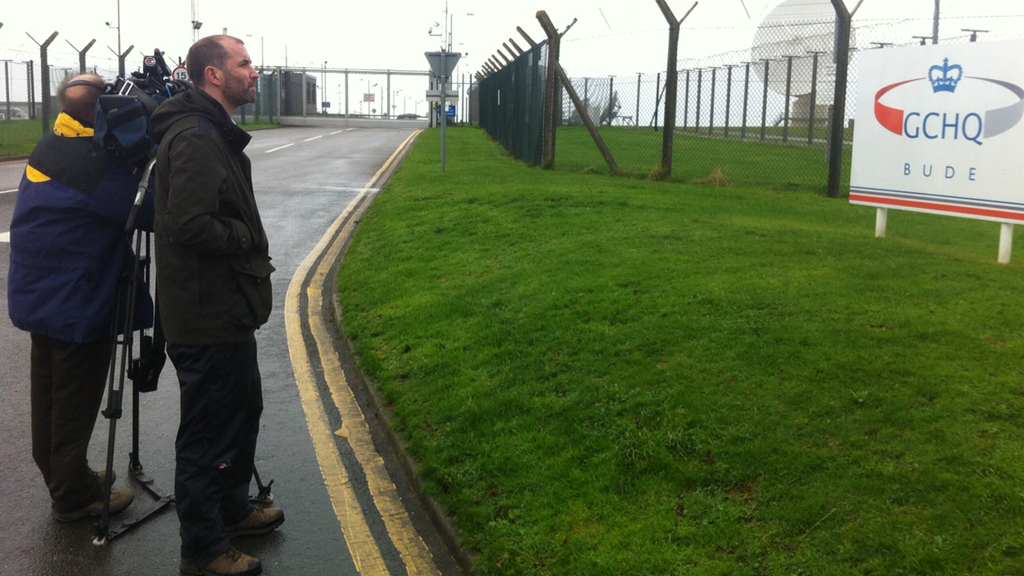Spying, the seaside, sub-sea cables – and Rudyard Kipling
I’m down in Bude, in Cornwall, trying to find out what people think of the local GCHQ outpost’s spying on transatlantic data traffic.
What’s very clear as soon as you get there is that GCHQ Bude is nothing new. The dishes of the satellite listening station on the cliff top have loomed over the town for years. That GCHQ snoops on phone and internet traffic in the interests of national security is also accepted by pretty much everyone.
But what has come as a surprise are the revelations about how GCHQ, with its US partner the NSA, may have the ability to capture and store all of the data traffic coming across undersea cables crossing the Atlantic through a programme called Tempora.
While the satellite dishes have long pointed at the shiny communications platforms orbiting the earth, it now appears that with the growth of the internet and mobile phones, GCHQ Bude has actually been paying far more attention to the cable that connects Europe with north America, that runs practically right beneath it.
TAT-14 is the main fibre-optic communications link between the US and the rest of the world and it makes landfall at Bude. Snowden’s leaks suggest GCHQ, with the help of the NSA, can gobble up all the data travelling along it, then filter it for information they are interested in.
That breach of privacy is what has prompted a move this week to force telecoms companies to come clean about whether they are co-operating with spying agencies.
It’s this collect-first ask-questions-later tactic which will be one of the key questions put to spy chiefs by MPs in Thursday’s session with the intelligence and security committee.
Before we head out into a drizzly morning in Cornwall to learn more, I’m wondering what Rudyard Kipling would have made of it. He knew a thing or two about spies. But also, it turns out, sub sea telecommunications. In 1896 the Kipling wrote The Deep Sea Cables, the first – and to my knowledge, the only – poem celebrating the technological marvel that is sub-sea cabling and what they have given humanity.
The wrecks dissolve above us; their dust drops down from afar—
Down to the dark, to the utter dark, where the blind white sea-snakes are.
There is no sound, no echo of sound, in the deserts of the deep,
Or the great grey level plains of ooze where the shell-burred cables creep.
Here in the womb of the world— here on the tie-ribs of earth
Words, and the words of men, flicker and flutter and beat—
Warning, sorrow and gain, salutation and mirth—
For a Power troubles the Still that has neither voice nor feet.
They have wakened the timeless Things; they have killed their father Time;
Joining hands in the gloom, a league from the last of the sun.
Hush! Men talk to-day o’er the waste of the ultimate slime,
And a new Word runs between: whispering, ‘Let us be one!’
(The Deep-Sea Cables was originally published in 1896 by Methuen & Co. in The Seven Seas)
Follow @tomclarkec4 on Twitter.
